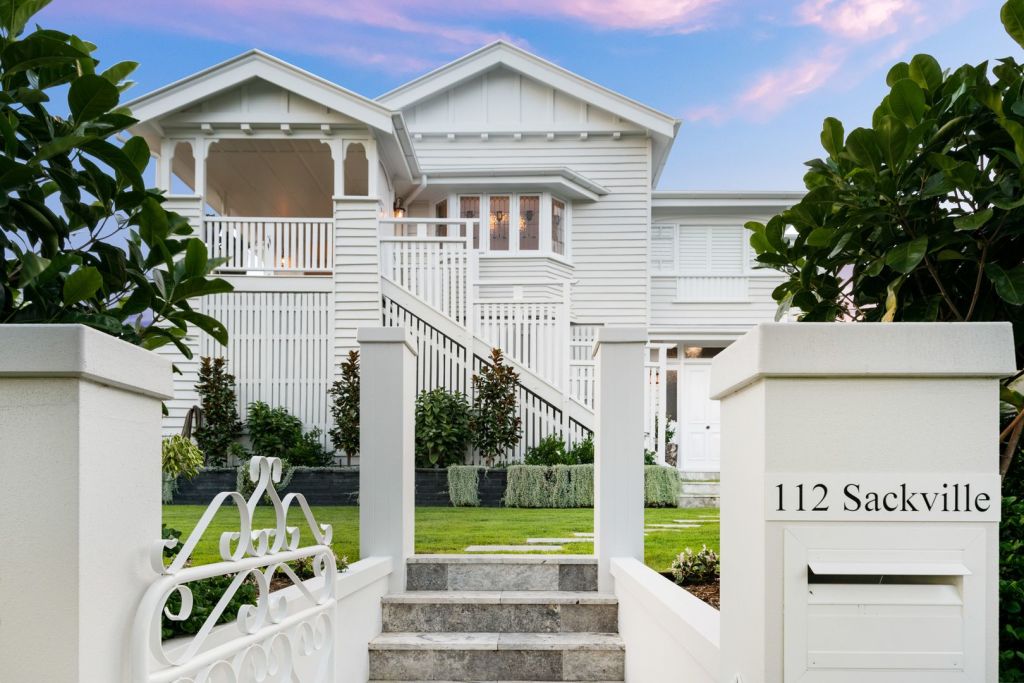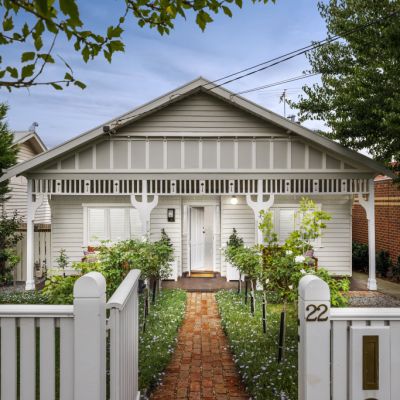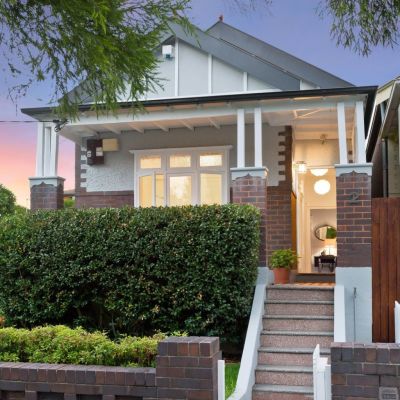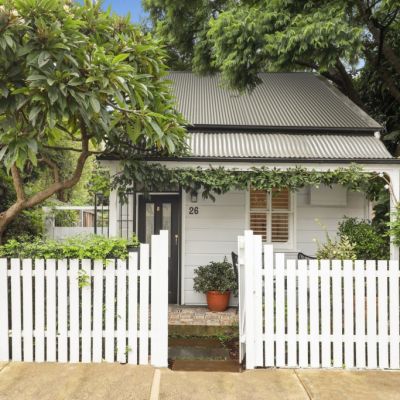The Sydney and Melbourne property markets are softening – but what about elsewhere in Australia?

One of the more striking aspects of Australia’s pandemic property boom was its uniformity: in 2021, prices skyrocketed in every single capital city and in most regions across the country.
Sydney and Melbourne were where the most outrageous of property deals were done in rapid succession; each week out-booming the last as prices kept rising amid overwhelming levels of demand from buyers, some of whom had seemingly bottomless buckets of cash.
That white-hot fervour has now all but disappeared in Australia’s two largest cities. The latest data from Domain has revealed the dynamics of the market are shifting, moving back into a more balanced state – or a more normal market – which means better conditions for buyers.
But do cooling markets in Sydney and Melbourne mean everywhere else is slowing down? Or are there capital cities where property is still running hot?
The Domain data details the volume of new property listings (supply), views per listing (demand) and auction clearance rates over the past week.
According to Domain chief of research and economics Nicola Powell, the results show the capital cities are no longer synchronised in their property movements.
“What we might see going into the coming months and coming year is much more uneven growth across our cities,” she said.
“Our smaller cities like Brisbane and Adelaide are the two key areas that are likely to see stronger rates of growth than other cities. The weakness is going to be centred in Sydney and Melbourne.”
Here’s what’s been happening in your capital city in the week ending March 26:
SYDNEY
The latest data from Domain shows Sydney is no longer a straight-up sellers’ market. There’s more property to choose from and not as many buyers to compete with.
The number of new properties being listed is now 13 per cent higher than at the same time last year, with large increases in the outer areas that became popular during the pandemic.
| Rouse Hill – McGraths Hill |
| Wollondilly |
| Blacktown – North |
“With new listings still elevated compared to last year, this provides more choice for buyers, greater opportunities to negotiate, and less urgency to make their purchase,” Dr Powell said.
And there are not as many people looking. Views per listing in Sydney are down by 31 per cent compared to the same time last year, declining from a peak reached early in 2021.
Dr Powell said although more properties on the market were helping to dilute the number of buyers per listing, it was not a sign of a “falling” market.
“It’s important to place this into context,” she said. “This time last year was an extremely competitive market for buyers, therefore it’s a stark comparison to make. Views per listing are still higher than they were during the same time in 2020.”
| Hawkesbury |
| Penrith |
| Dural – Wisemans Ferry |
Sydney’s auction clearance rates have fallen too. Last weekend, the preliminary clearance rate was 68 per cent – a seemingly drastic fall from the same time last year when clearance rates were regularly above the 80 per cent mark – although that clearance rate was still a sign of a healthy market, Dr Powell said.
“It’s a more healthy market, a more sustainable market. What we saw last year was highly unsustainable,” she said. “We’ve still got prices rising in some areas of Sydney – it’s just more modest rates of growth.”
MELBOURNE
Like Sydney, Melbourne’s property market has softened to a more balanced state. Domain data shows there’s more property to choose from and not as many buyers to compete with.
Particular pockets of Melbourne have seen especially large increases in new listings for sale, such as Sunbury and the Macedon Ranges – outer areas which were popular with buyers looking to escape the city during the pandemic.
| Macedon Ranges |
| Sunbury |
| Darebin – South |
| Yarra Ranges |
| Nillumbik – Kinglake |
The sheer number of buyers looking for property has eased in Melbourne, too. Views per listing are 16 per cent lower than they were this time last year.
“This means more properties on the market are helping to dilute the number of potential buyers on each listing,” Dr Powell said.
| Wyndham |
| Melton – Bacchus Marsh |
| Cardinia |
| Sunbury |
| Casey – South |
Melbourne recorded a preliminary auction clearance rate of 70 per cent last week, which was a fall from the clearance rates in the mid-80s this time last year – but this was still a strong result that showed Melbourne’s market had normalised, Dr Powell said.
“The word urgency was used a lot describing the property market last year, but that’s no longer there,” she said. “You’ve got much more cautious buyers and they’re going in much savvier. The fear of missing out is gone. They know there’s more choice.”
Dr Powell said the dynamics of the Melbourne market were slightly different to those in Sydney because its supply of property for sale had built up faster and prices did not rise as fast.
BRISBANE
Brisbane was on track to be the star property performer of 2022. Last month, it was recording high levels of buyer demand and some of the highest auction clearance rates across the nation.
But the floods were a circuit-breaker. Last weekend’s preliminary auction clearance rate hit just 56 per cent, a significant drop from Brisbane’s preliminary clearance rate earlier last month when it hit a record 86 per cent.
Since parts of the city were inundated, the property market had lost some of its momentum, Dr Powell said.
“The floods might have been a reset for buyers and sellers to wait a while,” she said. “The weekend just gone saw the highest number of auctions scheduled so far this year and a preliminary clearance rate of 56 per cent. However, we did see over a quarter of auctions withdrawn, perhaps reflecting how the recent floods delayed or changed decisions for some sellers.
“It’s very telling of sentiment in the city. Decisions may have been changed or delayed.”
The number of new properties listed for sale in Brisbane is up by 17 per cent. Areas like Nathan and Jimboomba are up by more than 63 per cent.
| Nathan |
| Jimboomba |
| Forest Lake – Oxley |
| Ipswich Inner |
| Springfield – Redbank |
However, Dr Powell said Brisbane was unlikely to slow down as much as Sydney and Melbourne, with views per listing having increased by 18 per cent compared to the same time last year.
“There are still more buyers than there is supply. Buyer competition remains heated and, despite the increase in new listings, buyers are still clearly outpacing supply for the time being,” she said.
| Beaudesert |
| Ipswich Hinterland |
| Ipswich Inner |
| Springwood – Kingston |
| Rocklea – Acacia Ridge |
“Brisbane is still going to be one of the cities that will see a strong rate of growth relative to the others because it hasn’t seen such a strong upswing for so long, like 10 years. Its growth has been so modest for so long, so it’s still playing catch up.
“What I would say is, irrespective of whether Brisbane is going to be the star performer this year, every market will be experiencing the same macroeconomic impacts.”
ADELAIDE
Sydney and Melbourne’s markets may be slowing down but in the South Australia capital, it’s still full steam ahead.
Last weekend saw Adelaide record its highest number of auctions held so far this year. Despite the increase in volume, the preliminary auction clearance rate clocked in at 74 per cent, the highest clearance rate of any city in Australia.
Buyer demand remains extremely high, with Domain data showing views per listing are up 38 per cent compared to the same time last year.
Inner-city areas like Campbelltown and Charles Sturt have seen a massive increase in views per listing, as have outer areas like Adelaide Hills and Gawler.
| Adelaide Hills |
| Campbelltown |
| Charles Sturt |
| Gawler – Two Wells |
| Playford |
The data showed the number of new property listings was 19 per cent higher than this time last year, with the top five areas with the most new listings, such as Prospect-Walkerville and Port Adelaide-East, up some 45 per cent.
Last week saw the highest weekly number of new listings to date in 2022.
|
Prospect – Walkerville
|
|
Port Adelaide – East
|
| Burnside |
| Holdfast Bay |
| Adelaide City |
But the increase in new listings was still not enough to balance out the sheer number of buyers searching in Adelaide, Dr Powell said.
“New listings continue to remain higher than this time last year and this is a good thing as buyer demand has been strong and highly competitive,” she said.
“Buyer competition remains heated as demand is still clearly outpacing supply for the time being.”
PERTH
Out of all the capital cities, Perth had the smallest rate of house price growth last year, rising by just 7.5 per cent.
It was the only capital city that didn’t record double-digit growth – cities like Hobart rose by 34.6 per cent, Canberra by 36.6 per cent and Darwin by 30.1 per cent.
But the upside of more moderate rates of price growth is sustainability. While the Sydney and Melbourne markets are losing steam, the capital of Western Australia is primed to continue rising.
The number of new listings has fallen by 8 per cent compared to the same time last year, meaning the level of supply has shrunk.
Demand for property in Perth is on the rise. Views per listing edged upwards by 2 per cent compared to this time last year, which Dr Powell said could be a result of the hard border controls that have now been removed.
“With the West Australian border now open, we should see an ignition of activity as residents are freely able to move across the country,” she said.
“Perth is what I would call a balanced market.”
Domain’s data showed the top five areas with the largest year-on-year increase of views per listing, such as Fremantle and Cockburn, had seen a rise of 15 per cent.
| Fremantle |
| Cockburn |
| Mandurah |
| Melville |
| Armadale |
Perth was showing signs of stronger market activity in general, Dr Powell said, from buyers and sellers alike.
“Despite the volume of new listings slipping 8 per cent compared to this time last year, the recent week has seen the second-highest number of new listings this year,” she said.
“That’s good news for buyers, who we expect to remain active in the lead-up to the April holidays.”
| Perth City |
| Kalamunda |
| Mandurah |
|
Serpentine – Jarrahdale
|
| Gosnells |
We recommend
We thought you might like
States
Capital Cities
Capital Cities - Rentals
Popular Areas
Allhomes
More










